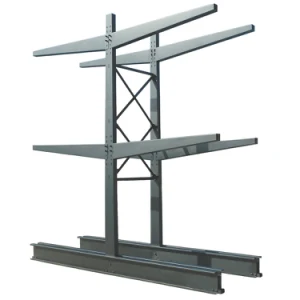Key features and considerations related to wire shelving
2023-11-27
Wire shelving is a type of storage solution characterized by shelves made of wire grids or mesh supported by metal frames. These shelves are versatile, durable, and allow for good visibility and air circulation. Wire shelving is commonly used in various settings, including homes, offices, retail spaces, and industrial environments. Here are key features and considerations related to wire shelving:
Features of Wire Shelving:
1. Wire Construction:
- Shelves are typically made of wire mesh or grids, creating a lightweight and open design. The wire construction allows for better air circulation and prevents the accumulation of dust.
2. Metal Frames:
- The wire shelves are supported by metal frames, providing structural stability. The frames are often made of materials like steel or chrome, offering durability and strength.
3. Adjustability:
- Many wire shelving units are designed to be adjustable. The shelves can be easily repositioned to accommodate items of different sizes, providing flexibility in storage.
4. Easy Assembly:
- Wire shelving units are often easy to assemble without the need for special tools. The modular design allows users to customize the shelving configuration based on their needs.
5. Visibility:
- The open design of wire shelving provides excellent visibility of the stored items. This makes it easy to locate and access items without the need for constant rearrangement.
6. Air Circulation:
- The wire construction allows air to circulate freely, preventing the buildup of moisture and reducing the risk of mold or mildew. This makes wire shelving suitable for use in areas with varying humidity levels.
7. Lightweight:
- Compared to some solid shelving options, wire shelving is lightweight. This feature is beneficial for ease of transport, installation, and reconfiguration.
8. Durability:
- Wire shelving is durable and resistant to damage from moisture, making it suitable for storage in environments such as kitchens, pantries, or even damp basements.
9. Variety of Styles:
- Wire shelving is available in various styles and finishes, including chrome, stainless steel, and epoxy coatings. This variety allows users to choose a style that suits their aesthetic preferences and functional requirements.
Considerations for Wire Shelving:
1. Weight Capacity:
- Consider the weight capacity of the wire shelving unit to ensure it can support the items you plan to store. Different units may have varying weight limits.
2. Use in Damp Environments:
- While wire shelving is resistant to moisture, consider the specific materials used and whether the shelving is suitable for use in damp or wet environments.
3. Type of Items to be Stored:
- Assess the items you plan to store on the wire shelves. Wire shelving is particularly suitable for items that benefit from air circulation and visibility.
4. Cleaning and Maintenance:
- Wire shelving is easy to clean, but it may require more frequent cleaning due to the open design. Consider how easily the shelves can be accessed and cleaned.
5. Intended Location:
- Choose wire shelving that is appropriate for the intended location, whether it's for use in a pantry, garage, retail display, or office setting.
6. Accessories and Add-Ons:
- Explore the availability of accessories and add-ons, such as dividers, liners, or casters, that can enhance the functionality of the wire shelving.
Wire shelving is a versatile and practical storage solution suitable for a wide range of applications. Its open design, adjustability, and durability make it popular for both residential and commercial use. When selecting wire shelving, consider the specific requirements of your storage space and the nature of the items you plan to store.



